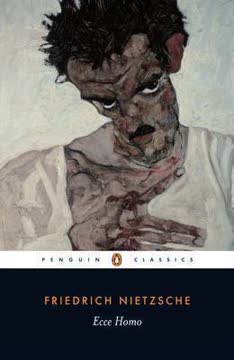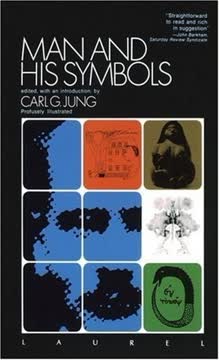重点摘要
1. 集体无意识包含普遍的原型
集体无意识绝不是一个封闭的个人系统;它是纯粹的客观性,广阔如世界,向全世界开放。
集体无意识与个人无意识。 集体无意识是心理的更深层次,包含遗传的、普遍的模式和图像,称为原型。与由个人经历形成的个人无意识不同,集体无意识是所有人类跨越文化和时间共享的。它是本能行为和感知模式的来源。
普遍的人类经历。 集体无意识的内容反映了基本的人类经历和关系,如出生、死亡、母子关系和英雄之旅。这些普遍主题出现在各文化的神话、童话和宗教象征中。通过理解原型,我们可以洞察人类共享的心理遗产和我们自己心理的更深层次。
2. 原型是塑造人类经验的原始图像
原型本质上是无意识的内容,通过变得有意识和被感知而改变,并从出现的个体意识中获得其色彩。
遗传的心理结构。 原型是源自集体无意识的先天、普遍的模式或图像。它们代表典型的人类经历、关系和动机。一些常见的原型包括:
- 母亲
- 父亲
- 孩子
- 英雄
- 智者
- 骗术师
- 阴影
塑造感知和行为。 虽然原型本身是抽象形式,但它们通过特定的图像、符号和行为表现出来,这些由文化和个人经验塑造。它们影响我们如何感知和回应世界,通常在无意识中运作,结构我们的经历和关系。
3. 人格面具是我们向世界展示的面具
人格面具是个体意识与社会之间复杂的关系系统,恰如其分地是一种面具,一方面是为了给他人留下明确的印象,另一方面是为了掩盖个体的真实本性。
社会适应。 人格面具是我们为了适应社会期望和进行社交互动而戴上的公共面具。它代表了我们在真实个性和社会规范之间做出的妥协。虽然在社会中运作是必要的,但过度认同人格面具可能导致失去真实自我。
认同的危险。 过度认同人格面具可能导致:
- 忽视心理的其他方面
- 不真实和内在冲突
- 难以适应变化的环境
- 中年危机,当人格面具不再适用时
4. 阿尼玛/阿尼姆斯代表我们内在的异性人格
阿尼玛不是教条意义上的灵魂,不是哲学概念中的理性灵魂,而是一个自然的原型,充分总结了无意识、原始心灵、语言和宗教历史的所有陈述。
异性原型。 阿尼玛(男性中的女性形象)和阿尼姆斯(女性中的男性形象)代表无意识的、内在的异性人格。这个原型体现了在一个人的有意识人格中通常未发展或被压抑的品质和潜能。整合阿尼玛/阿尼姆斯对心理的完整性至关重要。
表现和发展。 阿尼玛/阿尼姆斯经常出现在梦境和幻想中,并可能投射到浪漫伴侣身上。其发展经历从原始、本能形式到更精炼的精神和智慧形象。整合这个原型包括:
- 识别投射
- 发展其代表的未发展品质
- 实现更平衡的、两性兼具的人格
5. 阴影包含我们被压抑的方面
如果一个劣势是有意识的,人们总有机会纠正它。此外,它不断与其他兴趣接触,因此不断受到修正。但如果它被压抑并与意识隔离,它永远不会得到纠正。
人格的黑暗面。 阴影代表我们拒绝、压抑或否认的方面。它通常包含与我们有意识的价值观和自我形象相冲突的社会不可接受的冲动、欲望和特质。识别和整合阴影对心理成长和真实性至关重要。
压抑的危险。 压抑阴影可能导致:
- 将负面特质投射到他人身上
- 被压抑内容的突然爆发
- 心理失衡和神经症
- 自我意识和个人成长的局限
整合阴影涉及承认和接受这些被拒绝的方面,这可以带来更大的完整性、创造力和活力。
6. 个体化是整合无意识内容的过程
个体化意味着成为一个“个体”,而“个体性”包含我们内心最深处、最后和无可比拟的独特性,它也意味着成为自己的自我。因此,我们可以将个体化翻译为“自我实现”或“自我实现”。
通向完整的旅程。 个体化是将无意识内容整合到意识中的终生过程,导致独特、完整人格的发展。这个过程涉及面对和整合各种原型和无意识方面。
个体化的阶段:
- 面对人格面具和阴影
- 遇见和整合阿尼玛/阿尼姆斯
- 遇见自我原型(代表心理的完整性)
个体化需要持续的自我反省、梦境分析和积极参与无意识材料。它带来更大的自我意识、真实性和更平衡的意识与无意识之间的关系。
7. 符号连接有意识和无意识的心灵
符号不是掩饰某些普遍已知事物的标志——即“阴茎”一词的掩饰——而是表达一种尚无法以其他或更好方式表述的思想。
转化的力量。 符号作为有意识和无意识内容之间的桥梁,以具体、通常是视觉的形式表达复杂或抽象的思想。它们具有转化心理能量的力量,促进无意识内容向意识的转移,反之亦然。
活的符号与死的符号。 荣格区分了活的符号,它们富有意义并具有转化心理能量的力量;和死的符号,它们失去了情感影响力和转化力量。活的符号通常自发地出现在梦境和积极想象中,而死的符号通常出现在失去原始活力的教条宗教或文化表达中。
8. 梦境揭示无意识内容并补偿意识
梦境是灵魂最深处和最隐秘的角落里的一扇小门,通向那宇宙的夜晚,那是早在有自我意识之前就存在的心灵,无论我们的自我意识扩展到多远,它仍将是心灵。
通向无意识的窗口。 梦境提供了直接接触无意识材料的途径,通常表达在清醒意识中不可用或被压抑的内容。它们使用象征性语言传达重要的心理信息,并可以指导个体化过程。
补偿功能。 梦境经常补偿有意识的态度和观点,为心理带来平衡。它们可能:
- 呈现被忽视的人格方面
- 提供对情况的替代观点
- 警告潜在的危险或失衡
- 提供问题的创造性解决方案
分析梦境需要理解其象征性语言和个人联想,并考虑其相对于有意识态度的补偿功能。
9. 宗教和神话符号源自集体无意识
所有自然的神话过程,如夏季和冬季、月相、雨季等,绝不是这些客观事件的寓言;相反,它们是心理内部无意识戏剧的象征性表达,通过投射的方式——即在自然事件中反映——变得可以被人类意识所接触。
神话的心理起源。 宗教和神话符号不仅仅是发明的故事或寓言,而是根植于集体无意识的深层心理现实的表达。它们代表基本的人类经历和心理过程,投射到外部世界。
心理意义。 从心理学角度理解宗教和神话符号可以:
- 揭示普遍的人类经历和挑战
- 提供对心理结构和动态的洞察
- 为个人心理发展提供指导
- 通过揭示共同的人类主题,跨越文化和历史的鸿沟
10. 现代人类失去了与象征意义的联系
我们让祖先建造的房屋荒废,现在我们试图闯入祖先从未知道的东方宫殿。
象征的贫困。 现代西方文化失去了与活的符号和神话思维的许多联系。这种与象征意义的脱节导致:
- 心理失衡和神经症
- 意义和目的感的丧失
- 与自然和无意识的疏离
- 对外国精神传统的吸引
重新发现象征生活。 为了重新与象征意义建立联系,荣格建议:
- 参与梦境和积极想象
- 研究神话和比较宗教
- 探索艺术和创造性表达
- 建立与无意识的个人关系
- 在保持自身文化根基的同时,整合其他文化的心理洞察
通过重新发现符号和神话思维的力量,现代人可以恢复心理平衡,并在生活中找到更大的意义。
最后更新日期:
FAQ
What’s The Basic Writings of C.G. Jung about?
- Exploration of the psyche: The book provides a comprehensive overview of Jung's theories on the human psyche, focusing on the unconscious and its influence on behavior.
- Collective unconscious concept: Jung introduces the idea of the collective unconscious, which contains archetypes and shared human experiences.
- Individuation process: It discusses the process of integrating unconscious material into consciousness, crucial for personal development and self-realization.
- Psychological and religious themes: Jung examines the relationship between psychology and religion, suggesting that religious experiences are rooted in the unconscious.
Why should I read The Basic Writings of C.G. Jung?
- Foundational psychological concepts: The book is essential for understanding analytical psychology and Jung's contributions to the field.
- Rich insights into behavior: Jung's exploration of dreams, archetypes, and the unconscious provides profound insights into human behavior.
- Integration of spirituality: It bridges the gap between psychological theory and spiritual experience, relevant for those interested in both fields.
- Historical significance: Jung's writings offer a historical perspective on the evolution of psychological thought and its impact on contemporary practices.
What are the key takeaways of The Basic Writings of C.G. Jung?
- Understanding the unconscious: The unconscious is a dynamic part of the psyche that influences consciousness and behavior.
- Role of archetypes: Archetypes are universal symbols that shape human experiences and cultural narratives.
- Individuation process: The journey toward self-realization involves integrating various aspects of the psyche for personal growth.
- Psychological and spiritual integration: Jung emphasizes the importance of integrating spiritual experiences into psychological practice.
What are the best quotes from The Basic Writings of C.G. Jung and what do they mean?
- "The unconscious is the matrix of the human mind." This highlights the foundational role of the unconscious in shaping thoughts and behaviors.
- "The privilege of a lifetime is to become who you truly are." It underscores the importance of individuation and self-realization.
- "I am not what happened to me, I am what I choose to become." This emphasizes personal agency and the potential for growth beyond past experiences.
- "The psyche is the greatest of all cosmic wonders." Jung emphasizes the complexity and depth of the psyche in understanding human existence.
What is the collective unconscious according to Jung in The Basic Writings of C.G. Jung?
- Shared human experiences: The collective unconscious is a part of the unconscious mind shared among all humans, containing universal memories and archetypes.
- Archetypes as patterns: These are innate, universal symbols and themes that shape human experiences across cultures.
- Influence on behavior: The collective unconscious connects personal experiences to broader human narratives, influencing individual behavior and cultural phenomena.
How does Jung define archetypes in The Basic Writings of C.G. Jung?
- Universal symbols: Archetypes are innate, universal symbols residing in the collective unconscious, representing fundamental human experiences.
- Influence on psyche: They shape perceptions, emotions, and behaviors, often manifesting in dreams, myths, and cultural narratives.
- Examples of archetypes: Common archetypes include the Hero, the Mother, and the Shadow, each representing different aspects of the human experience.
What is the individuation process described in The Basic Writings of C.G. Jung?
- Integration of self: Individuation is the process of integrating various aspects of the self, including the conscious and unconscious, for a balanced personality.
- Encountering the Shadow: It involves confronting and assimilating the Shadow, or repressed parts of the self, leading to greater self-awareness.
- Spiritual growth: The process fosters a deeper connection to the self and the collective unconscious, essential for personal development.
How does Jung differentiate between personal and collective unconscious in The Basic Writings of C.G. Jung?
- Personal unconscious: Contains repressed memories, forgotten experiences, and individual complexes unique to each person.
- Collective unconscious: Holds universal archetypes and shared human experiences that transcend individual lives and cultures.
- Interconnectedness: While the personal unconscious is shaped by individual experiences, the collective unconscious connects all humans through shared symbols and themes.
What is the significance of dreams in Jung's writings in The Basic Writings of C.G. Jung?
- Symbolic representation: Dreams are symbolic expressions of the unconscious, providing insights into unresolved conflicts and hidden aspects of the self.
- Path to individuation: Analyzing dreams is crucial for integrating unconscious material into conscious awareness.
- Personal and collective meanings: Dreams reveal both personal issues and collective archetypal themes, valuable for understanding the psyche.
How does Jung relate psychology to religion in The Basic Writings of C.G. Jung?
- Psychological function of religion: Religion provides meaning and structure to human experience, rooted in the unconscious.
- Religious symbols as archetypes: These symbols and myths are expressions of archetypal images from the collective unconscious.
- Integration in therapy: Acknowledging the spiritual dimension can enhance therapeutic outcomes and foster a deeper connection to the self.
What role does the unconscious play in psychological development according to Jung in The Basic Writings of C.G. Jung?
- Source of creativity: The unconscious provides raw material for personal growth and artistic expression.
- Influence on behavior: Unconscious processes drive behavior, often leading to conflicts that must be resolved for healthy development.
- Path to self-realization: Engaging with the unconscious through methods like dream analysis is essential for achieving individuation and self-realization.
How does Jung's view of the psyche differ from Freud's in The Basic Writings of C.G. Jung?
- Broader perspective: Jung expands the concept of the unconscious beyond Freud's focus on repressed desires, incorporating collective elements and archetypes.
- Independence of the unconscious: Jung emphasizes the autonomy of the unconscious, suggesting it operates independently and influences consciousness.
- Spiritual dimension: Unlike Freud, Jung integrates a spiritual dimension into his understanding of the psyche, viewing it as a pathway to deeper self-awareness.
评论
**《荣格基本著作》**因其对荣格基础思想的全面探讨而备受赞誉。读者们欣赏书中精心挑选的内容、通俗易懂的语言以及富有洞见的导言。许多人认为荣格关于原型、集体无意识和心理类型的概念具有启发性和改变人生的力量。这本书被认为是了解荣格作品的极佳入门书,既为学者提供了深度,又为新手提供了清晰的理解。一些读者指出荣格在性别问题上的过时观点,而另一些人则强调他的理论在理解人类心理和精神方面的持久相关性。

















